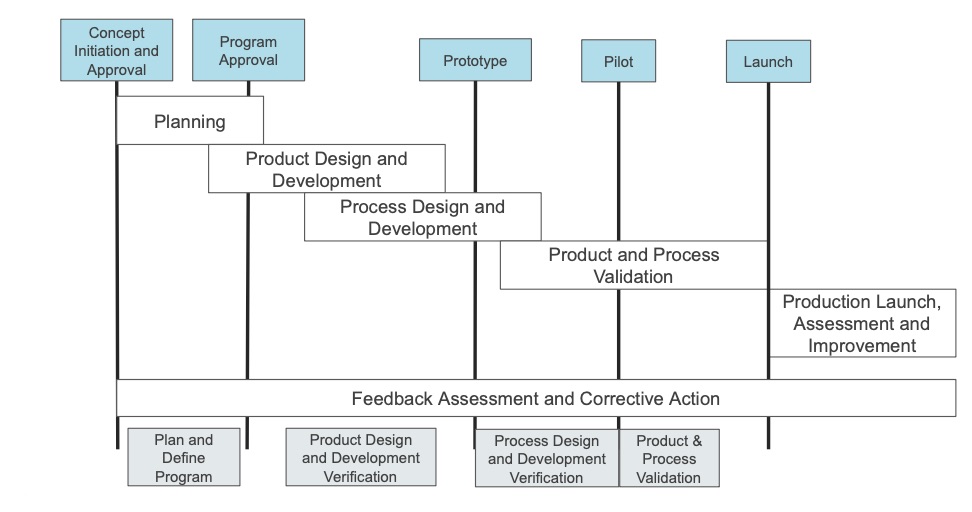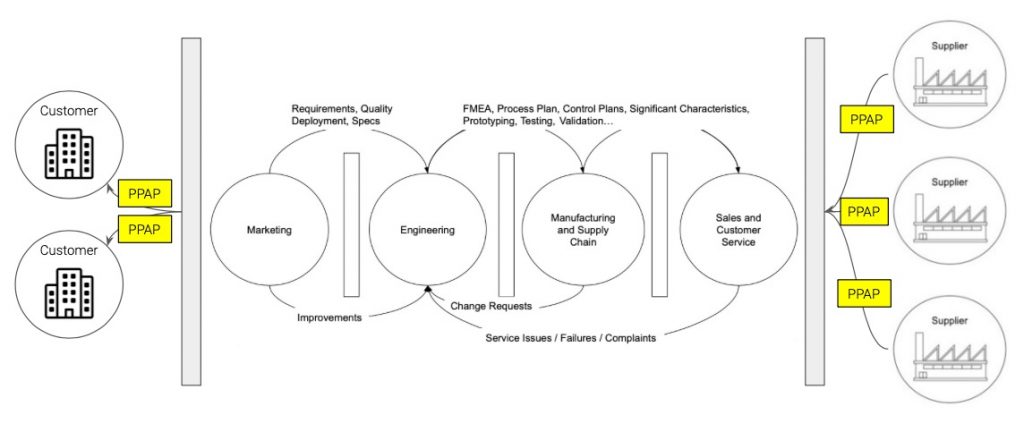Advanced Product Quality Planning (APQP) is a structured process for ensuring the quality of new products or processes. It is a cross-functional team approach that involves all aspects of product development, from design to manufacturing. APQP is used in a variety of industries, including automotive, aerospace, and medical devices.
The APQP process typically consists of five phases:
- Product Planning and Quality Program Definition: This phase involves defining the product requirements and developing a quality plan.
- Product Design and Development: This phase involves designing the product and its components.
- Process Design and Development: This phase involves developing the manufacturing process and ensuring that it can meet the product requirements.
- Validation of Product and Process: This phase involves testing the product and process to ensure that they meet the requirements.
- Production Launch, Assessment, and Improvement: This phase involves launching the product into production and monitoring its performance.
PPAP (Production Part Approval Process) is a critical step in the APQP (Advanced Product Quality Planning) process. APQP is a broader process that covers the entire product development lifecycle, while PPAP is a more focused process that is specifically concerned with ensuring that parts manufactured by suppliers meet customer requirements. The PPAP package provides the customer with the necessary documentation to assess the supplier’s ability to produce the part consistently. PPAP in the Supply Chain can look like the figure below.
If the organization is in the middle (Tier 1/2 suppliers in many industry supply chains) of the Supply Chain with considerable design responsibilities, the demand for managing APQP programs and PPAP processes is considerable due the customer demand as well as responsibility to manage Suppliers’ related APQP/PPAP.

